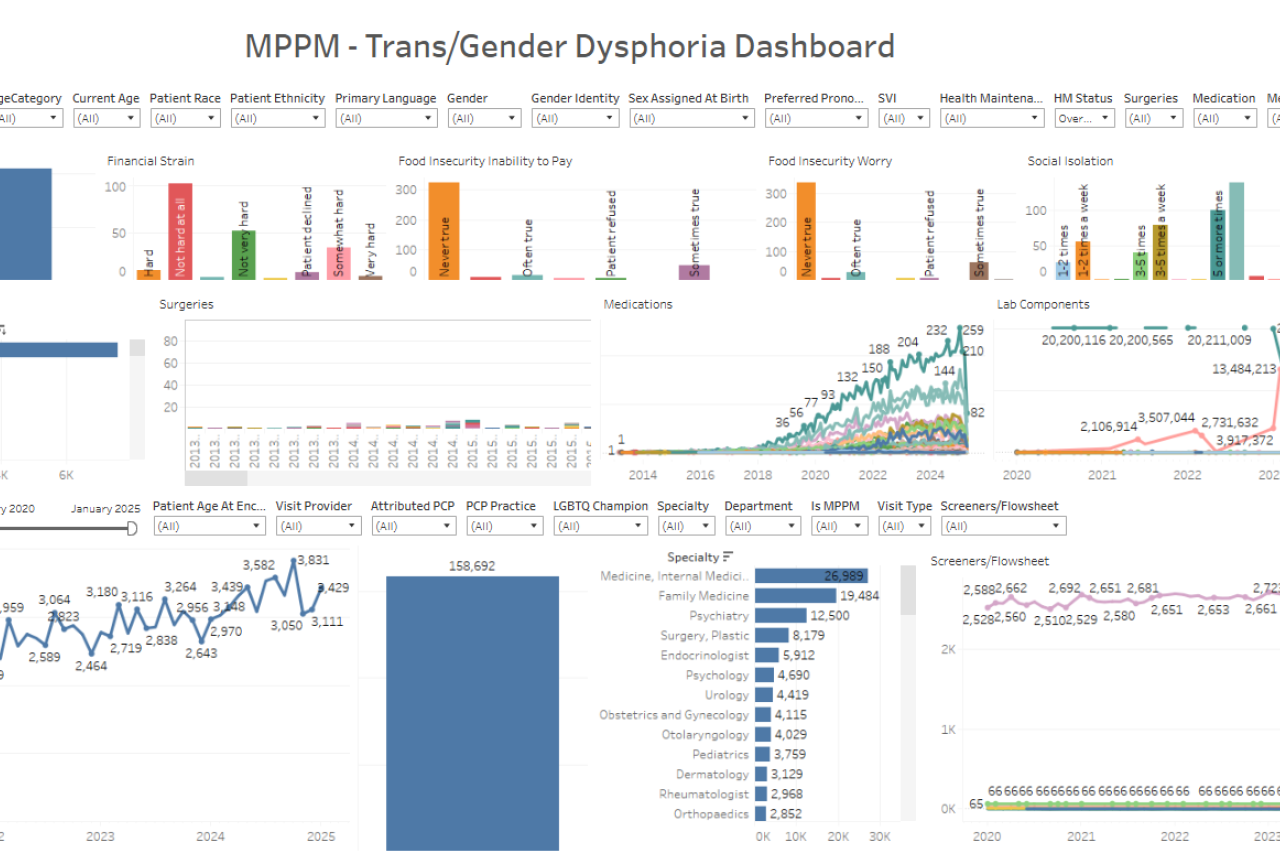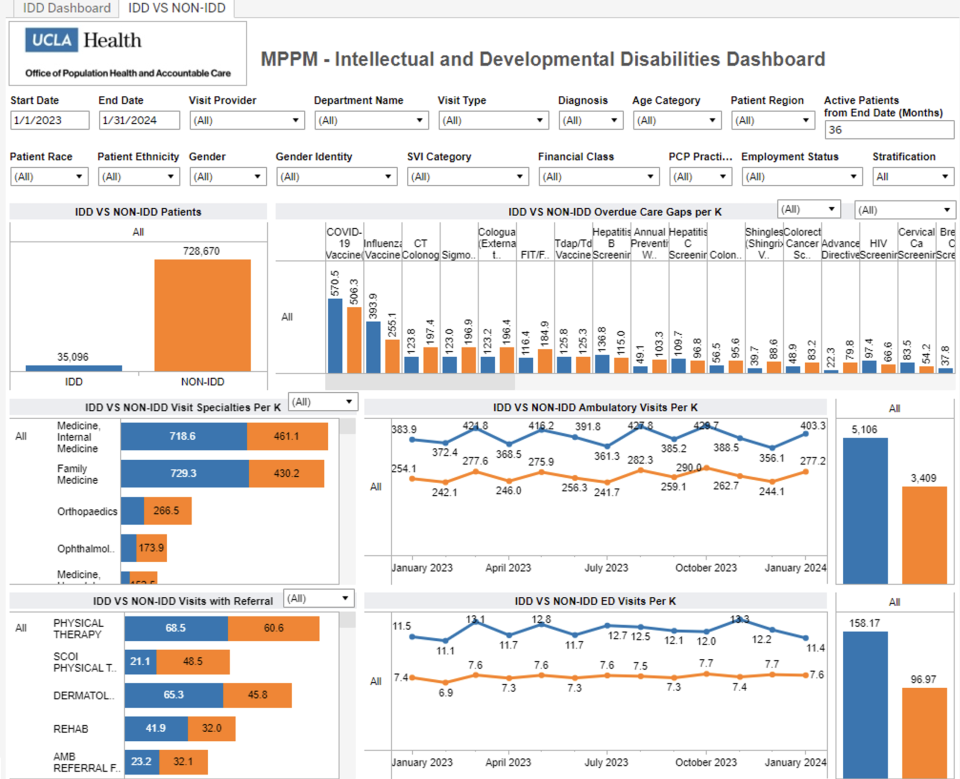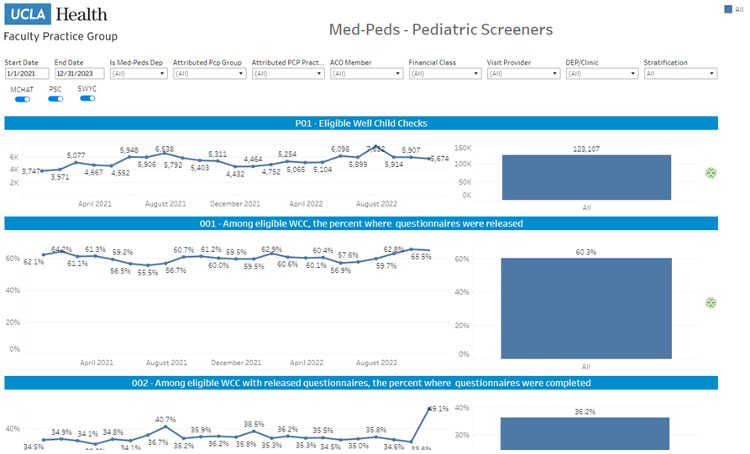Division Wide Projects
The division’s commitment to an environment of discovery and improvement can be observed through the multitude of reports and dashboards regularly created. By using a data-driven QI framework, the division’s research has the potential to improve outcomes for patients and the overall health system. The following are a few examples of the recent work.
Individuals Experiencing Gender Dysphoria
Gender diverse individuals are known to experience myriad health inequities and barriers to care, including difficulties accessing gender affirming healthcare and gender-affirming surgeries, increased rates of anxiety/depression and suicidality, and reduced rates of preventative health screenings. To support our Gender diverse patients at UCLA, our division developed a comprehensive data dashboard focused on this population. This dashboard provides information about the unique needs of our gender health patients, including care gaps and preventative health screenings, access to gender affirming care, and information about how gender health patients are accessing services within the UCLA health system. UCLA Health physicians, psychologists, and other health providers will be able to use this dashboard to optimize patient care, identify opportunities for growth, easily come up with and implement quality improvement initiatives, and guide us as we continue to provide excellent and evidence-based care to this vulnerable patient population who, now more than ever, needs our support.

Quality Improvements in the Care of Individuals Living with Sickle Cell Disease
Individuals living with sickle cell disease have suffered from significant health disparities and
challenges to assessing basic care. To support our UCLA Health sickle cell disease patients, our
division developed a comprehensive data dashboard focused on this population. This
dashboard provides immediate access to information about the needs of sickle cell patients at
UCLA Health, including the care gaps they may be experiencing regarding disease modifying
agents, screening, and acute care utilization. UCLA Health physicians, researchers, social
workers, and other health providers will use this dashboard to identify opportunities to
optimize patient care as well as to develop action-oriented research strategies and quality
improvement initiatives.

Individuals with Intellectual and/ or Developmental Disabilities
Individuals with intellectual and/or developmental disabilities (i.e., neurodivergent individuals)—including those with autism, ADHD, and other developmental differences—have been found to experience many health challenges. To support our UCLA Health neurodivergent patients, our division developed a comprehensive data dashboard focused on this population. This dashboard provides immediate access to information about the needs of neurodivergent patients at UCLA Health, including the care gaps they may be experiencing. UCLA Health physicians, psychologists, social workers, and other health providers will use this dashboard to identify opportunities to optimize patient care as well as to develop action-oriented research strategies and quality improvement initiatives.

Project Archive
-
Pediatric Developmental Screener
Physicians in our division work in many offices across UCLA, and most of the offices have physicians from different specialties. One part of quality improvement is to reduce variation of care across different sites, and this includes the use of uniform validated pediatric screeners. The division developed a dashboard to monitor the use of these questionnaires, and to help its physicians troubleshoot clinic-specific obstacles of using them in regular clinical practice.

Temporal Relationship Between Immediate Care (IC) Visits and Emergency Department (ED) Visits
Our division is examining the relationship between patients seen in the IC and then again in the ED within 72 hours. There are many possible reasons for this association, and often the timing is just coincidental as the ED visit may be for a condition unrelated to the initial IC visit. By examining this relationship, the division can learn from its physicians and suggest changes that will support the physicians to provide the right care at the right time at the right place. This project is a partnership with Dr Vladimir Manuel in the CPN division of UCLA. We are utilizing many of his tools, including dashboards that monitor this association, and help with analysis of the outcomes of any interventions.
